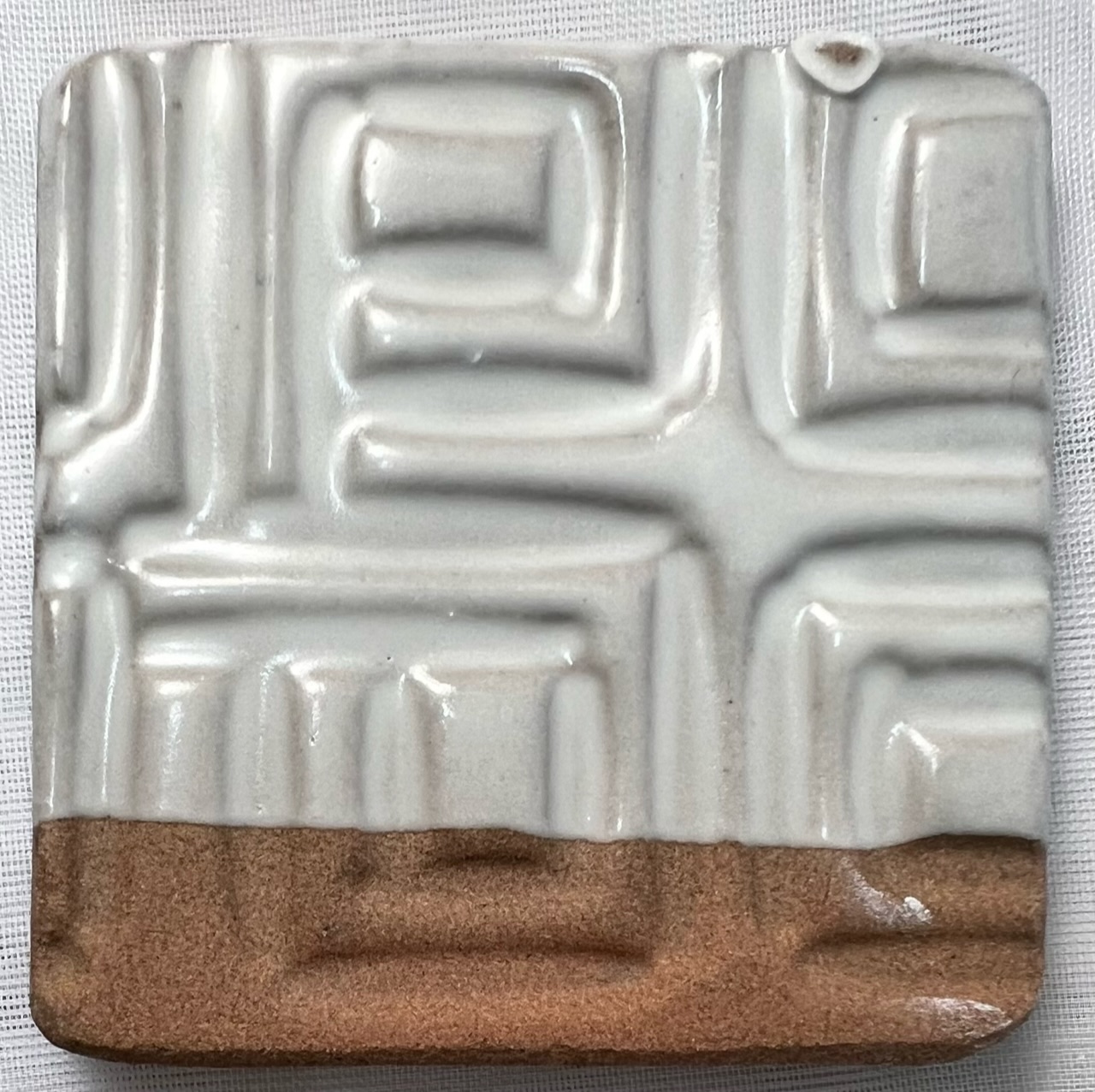M350
Description
Mid-temperature, finely ground and smooth, plastic, semi-vitreous, medium brown burning, native body for functional ware.
M350 is the material of choice if you need to make functional ware from a brown burning body. It is now processed to 60 mesh particle size (starting in Jan 2024).
M350 is very similar in composition to M390 and shares the very fine and smooth natural character and plasticity. Its lighter color will be suitable for all but very specialized glaze effects requiring a dark burning body. M350 contains 5 different clays each of which is quite balanced on its own and it is a body over which we have a lot of consistency control.
Process Properties
M350 has medium plasticity and feels slick on the wheel and generates significant slip during throwing. While you will find it dries well for smaller items, as with any other fine-grained material, care and attention in drying are necessary in making larger pieces, especially flat plates, shallow bowls, and sculptural ware. Make sure that the focus is on evenness of drying rather than speed; if sections of a piece dry faster, then either slow these sections down or slow down the entire piece. If you need to attach elements (i.e. handles) use slip with a low water content and apply as much pressure and lateral movement as possible during the joining process.
If you need an all-around coarser material, M375 is another possibility, however it can produce pinholing in some glazes and will tend to produce rough glaze surfaces where grog exposes through thinly glazed sections (i.e. mug lips).
Firing
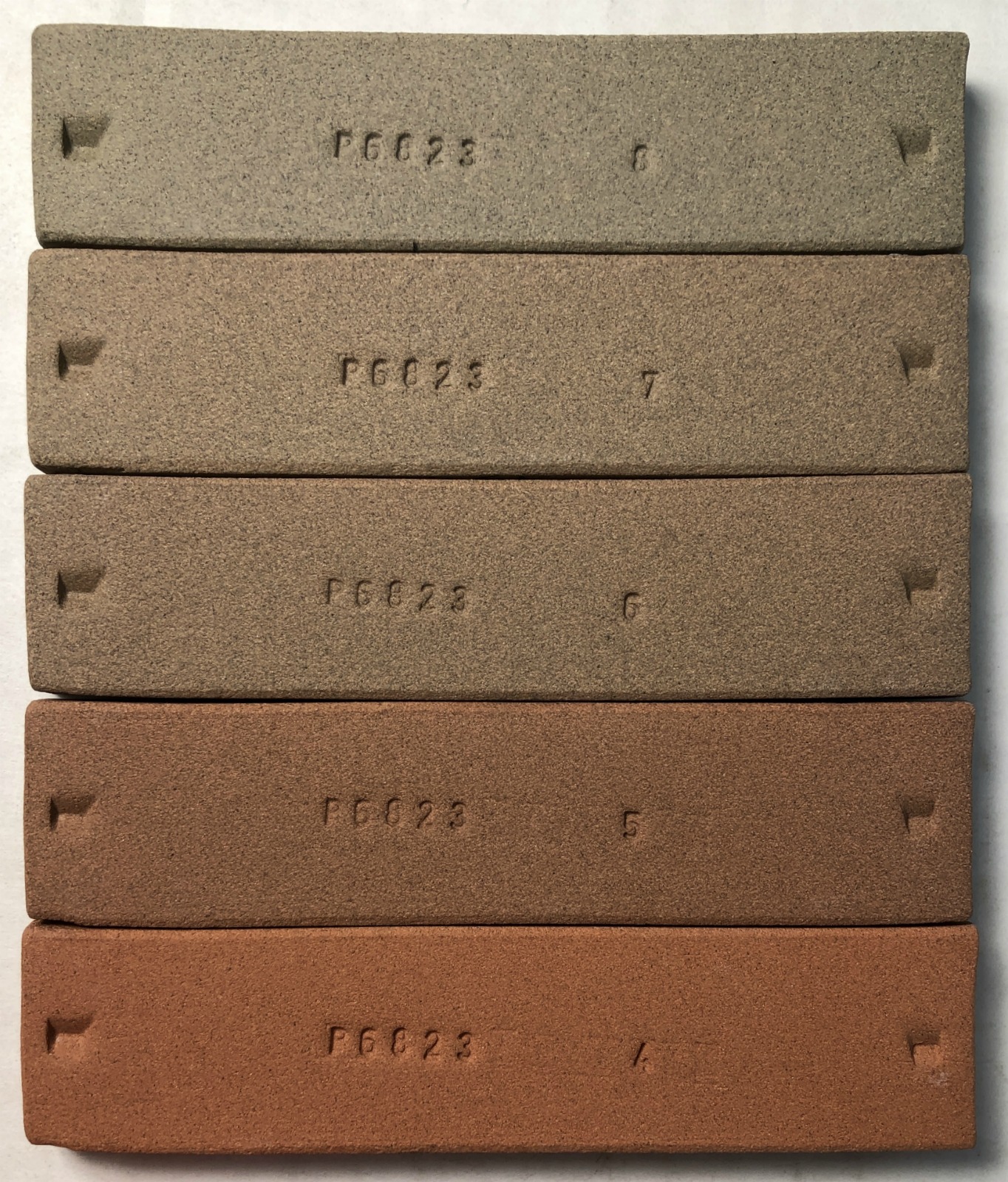
These M350 fired bars show the progression of color from cone 4 (bottom) to cone 8. Cone 5 still has the leather tan color, but it not really vitreous enough for functional ware, cone 6 is better. Cone 8 is over fired.
M350 fires to a leather brown color at cone 6. In the cone 4-5 range there are pinkish and more variegated tones in the brown color. At cone 7 the body burns to a dense grey brown. If this M350 is fired beyond cone 7 it will begin to bloat. M350 does work in reduction at cone 4-6 whereas M390 and M340 are too vitreous.
M350 is fine-ground and thus fires to a homogeneous color compared to M332, which burns to a darker more earthy variegated surface.
To get the best defect-free surface please consider using a drop-and-hold firing schedule, for example the PLC6DS schedule. If crystallization during cooling is not an issue, glazes will give optimum results if slow-cooled also (e.g. the C6DHSC schedule).
Glazing
M350 is quite fine and fires to a homogeneous fired surface for most glazes. Since it is a dark stoneware, the iron in the clay will bleed into glazes and colors and mute them to some extent so that glazes will not be as vivid as they would be if used on porcelain.
M350 is high in silica and will accept most typical cone 6 glazes without producing crazing. However, crazing is possible on M350 if a glaze is high in sodium (i.e. from soda feldspar or nepheline syenite) or is very low in silica or alumina (little clay or flint). As a general rule, unbalanced glazes containing high feldspar and little kaolin or flint are usually a problem. For functional ware we recommend you check glaze fit using a boiling water:ice water immersion test. Please contact Plainsman if you need help to adjust your glaze.
Although M350 fires to a reddish tone at cone 4-5, keep in mind that the color will darken considerably under a transparent glaze because the glaze fluxes the surface of the clay advancing its color to that of a hotter firing.
The porosity of this body is required in order to achieve the desired tan color at cone 6. That means that pieces will leak water, although very slowly, if they are unglazed or the glaze is crazed.
Caution About Clear Glazes
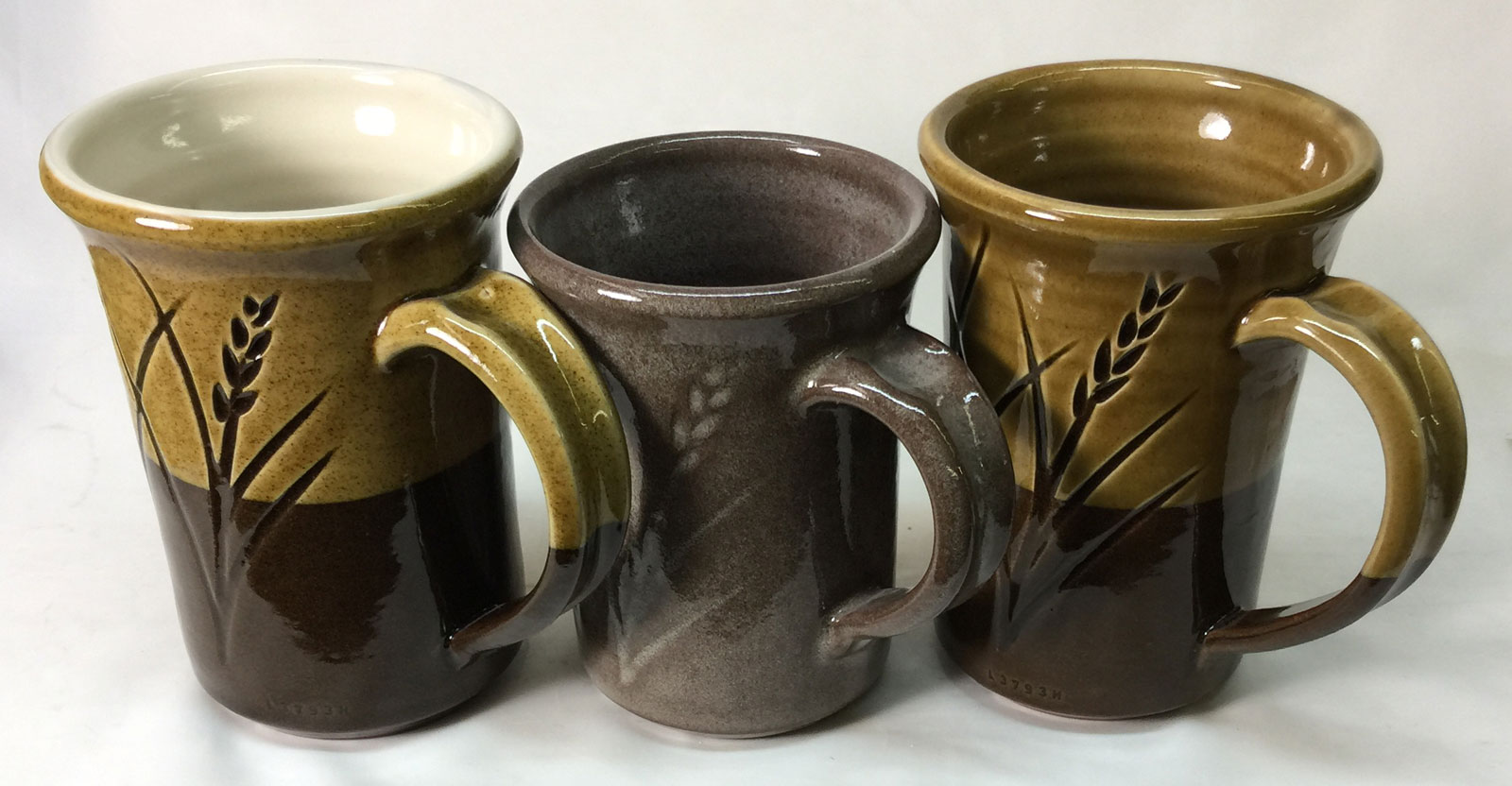
Clear glazes often do not work on our dark burning bodies (like M390, Coffee Clay). The center mug is clear-glazed with G2926B (and is full of bubble clouds).
Left mug: The outside glaze adds 4% iron to G2926B (the iron particles are acting as a bubble fining agent). Right mug: The whole thing is glazed with GA6-B Alberta Slip base glaze.
Glaze Recipes
Commercial brush-on glazes: They may or may not fit our clays (check for glaze fit using a BWIW test or similar). For brightly colored glazes (especially with layering) do a leach test (e.g. GLLE test). Consider using a transparent or white liner glaze for food surfaces.
DIY brushing glazes and dipping glazes: Begin with good transparent base recipes that do not craze, cutlery mark or leach on the body. Our G2926B glossy and G2934 matte can be purchased as powders or weighed out from their recipes (both can be adjusted for glaze fit). The two can be mixed to fine-tune matteness (e.g. 15:85 matte:gloss mix gives us a silky matte). Stains, opacifiers and variegators can be added to make almost any effect. Consider also making glazes based on GA6-A and GR6-A.
Crazing: Functional ware must remain craze-free (crazing is unsanitary and drastically reduces ware strength). Even though ware may not be crazed out-of-the kiln it may do so with time. Do cycles of a boiling water:ice water immersions (BWIW test) on a piece to test glaze fit (by stressing it to bring out any crazing or shivering tendencies).
Thixotropy: If you want the best application properties for one-coat dipping, consider creating a thixotropic slurry. Thixotropic glazes are creamy because they have been thinned and then gelled by the addition of a flocculant.
This body is a great candidate for the engobe process, we recommend the L3954B recipe. It can be colored with stains or whitened with zircopax. It can be applied thickly as an engobe or thinly as a slip.
If you want to develop and mix your own glazes and engobes consider getting an account at insight-live.com. You can organize a methodical development program and adopt better methods of testing (e.g. melt fluidity, thermal stress, slip-fit tests).
Thermal Expansion
We do not supply thermal expansion values. If a chart is supplied here, please view it only as a way to compare one body with another. Please note that, although you may calculate the thermal expansion of a glaze, this cannot be done for clay bodies since they do not melt. The best way to fit glazes to clay bodies is by testing, evaluation, adjustment and retesting. For example, if a glaze crazes, adjust its recipe to bring the expansion down, fire a glazed piece and thermal stress it (using an IWCT test, 300F into ice-water). If it still crazes, repeat the process.
Physical Properties
Drying Shrinkage: 6.0-7.0% Dry Strength: n/a Water Content: 20.5-21.5% Drying Factor: c120 Dry Density: n/a
Sieve Analysis (Tyler mesh):
48-65: 0.0-0.1% 65-100: 0.1-0.5 100-150: 2.5-3.5 150-200: 4.5-6.5 200-325: 7.0-10.0
Fired Shrinkage:
Cone 5: 4.0-5.0 Cone 6: 4.5-5.5 Cone 7: 5.0-6.0
Fired Absorption:
Cone 5: 3.5-5.0 Cone 6: 2.5-3.5 Cone 7: 1.5-2.2
Chemical Analysis
BaO 0.3 CaO 0.2 K2O 2.2 MgO 0.7 Na2O 0.1 TiO2 0.7 Al2O3 17.2 P2O5 0.1 SiO2 68.5 Fe2O3 2.6 MnO 0.0 LOI 7.5%
Gallery
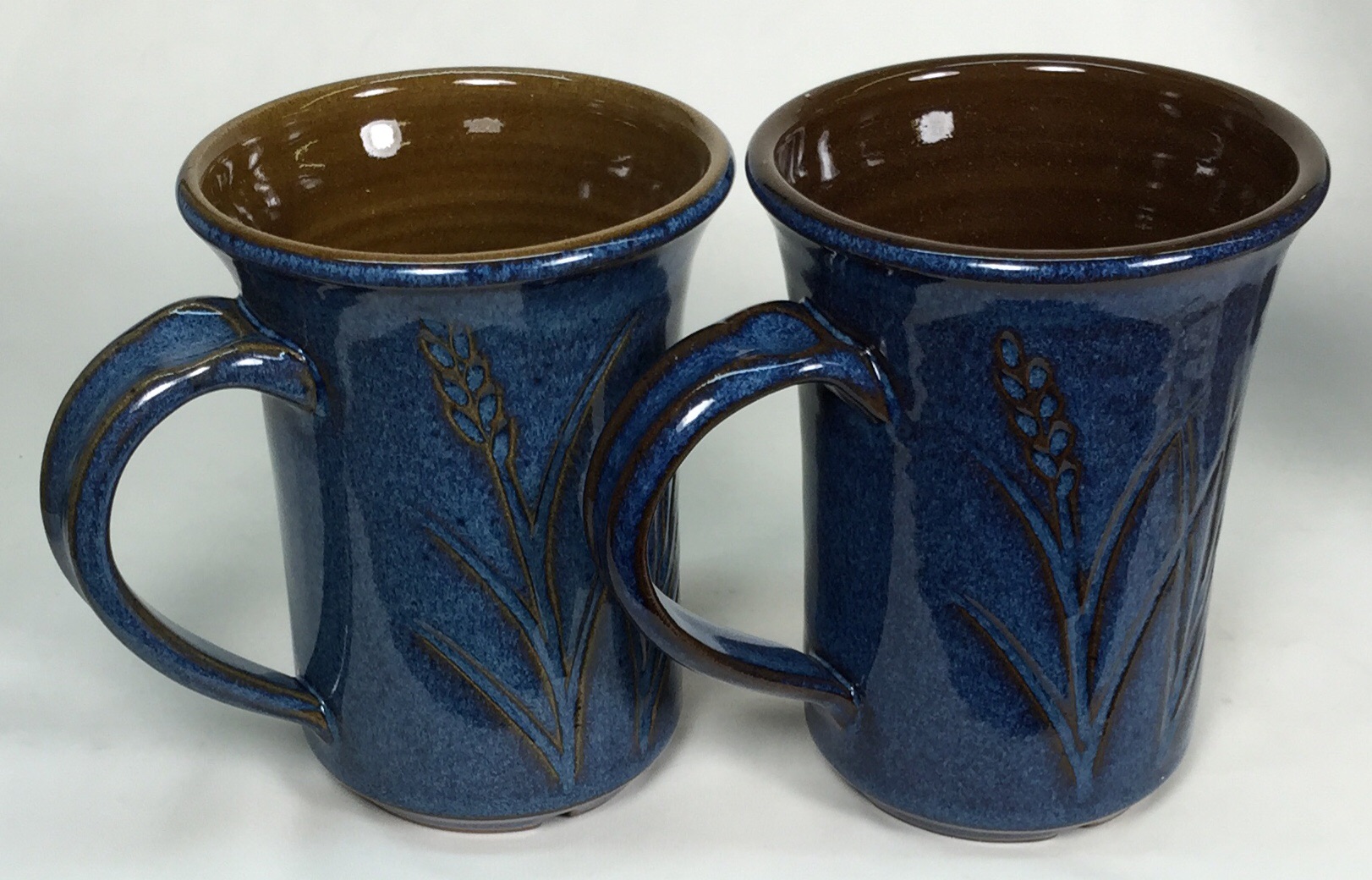
M350 vs M390 at cone 6. The liner glaze is Alberta Slip GA6-A base, outside is GA6-C Alberta Slip rutile blue. By Tony Hansen.
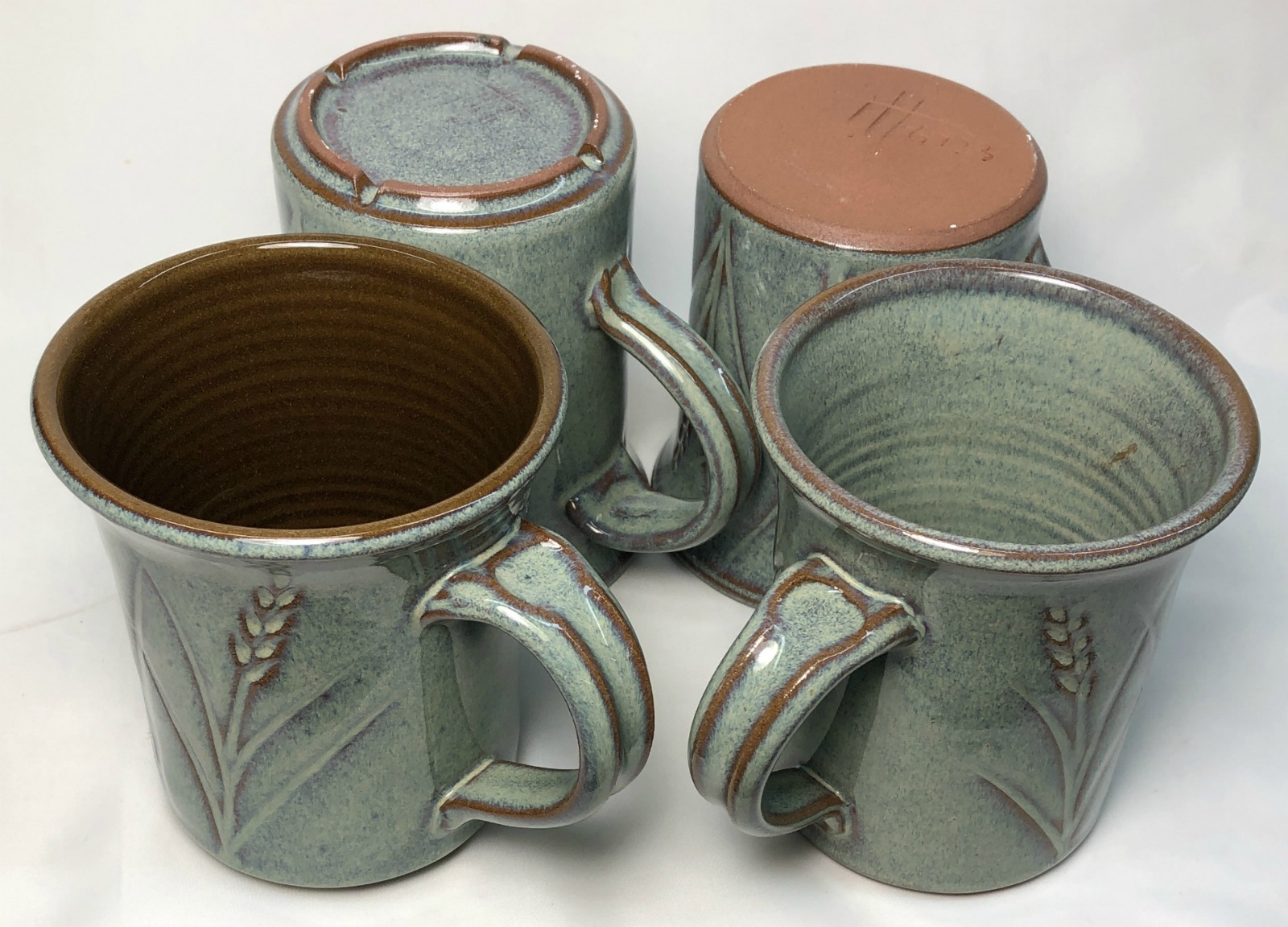
M350 mugs with GA6-C Alberta Slip rutile blue glaze outside and GA6-B Alberta Slip base inside (left front). Fired to cone 6 using C6DHSC firing schedule.
